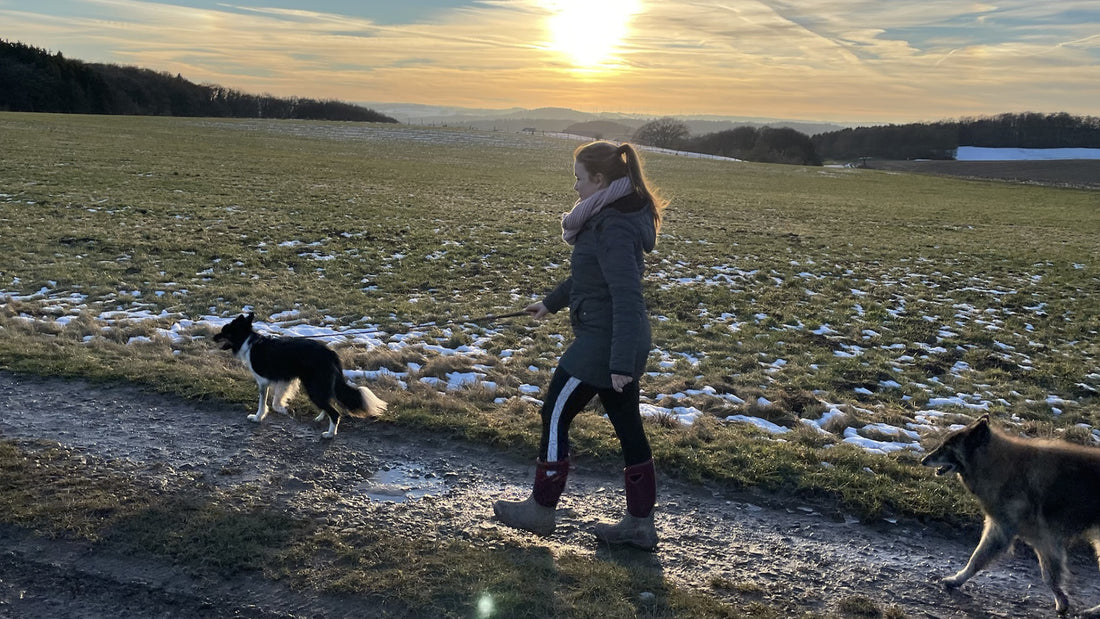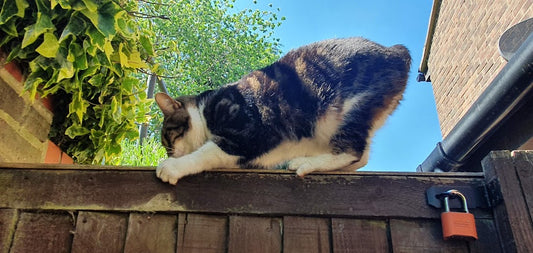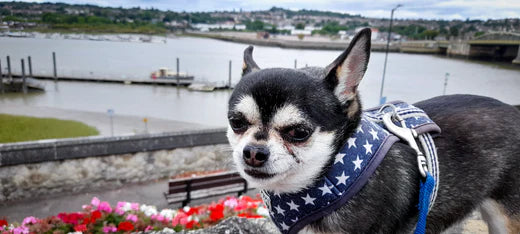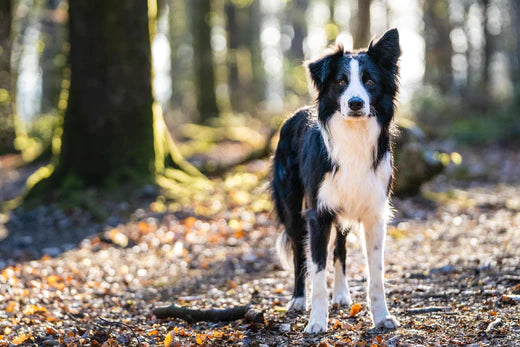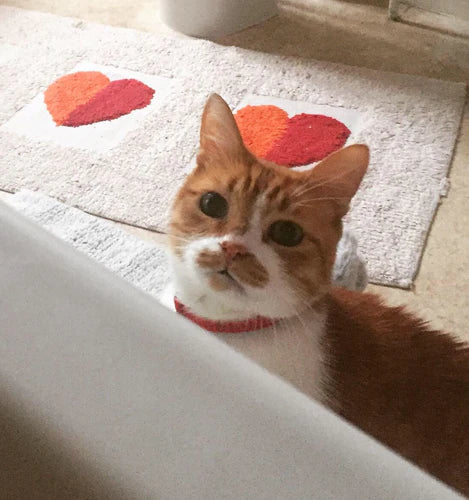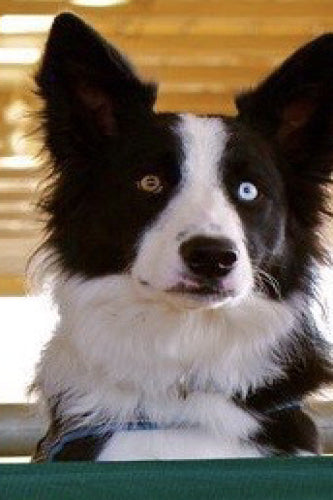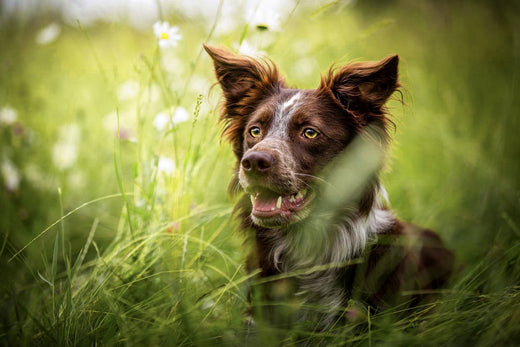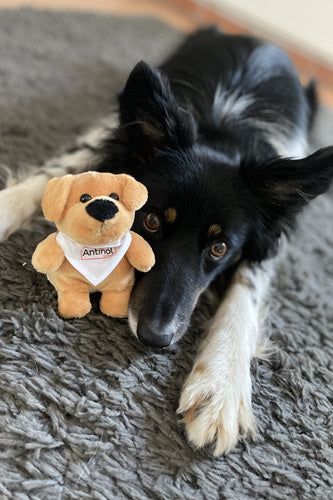Mona knows how it feels to live amongst champions. When we caught up with her on Zoom, she was surrounded by her pack of agility champions. For the past 21 years, Mona has run dogs in competitions all over the world.

“I'm really proud of all my dogs, and with my youngest one, I'm really looking forward to her future.”
Mona and her dogs have had incredible agility careers, but it is Qju who has made it possible for her to see the world.
“My girl Qju is eight and a half. We have enjoyed agility in so many different countries. It was a really great pleasure to run her, and we got a lot of great results. Qju is the 2018 European Open Champion Team and Vice European Open Champion Individual. I was really proud of that. And in 2019, we also got the Vice World Champion in the team competition. That's our biggest achievement.”
But last summer Qju started limping, the start of major problems for Mona and Qju.

“It was after a normal training session, not even a high level one. She seemed fine, but after a few hours of rest, she was limping. She was still limping the next morning, so I took her to the vet.”
The vet couldn’t find the cause of the problem. She was limping on and off. Sometimes she seemed fine, and at other times she was really uncomfortable. Mona gave her four weeks of rest and tried again with training, but the same thing happened.
“I did some research, and we went to see different people, the physiotherapist, osteopath and our vet. They worked out it seemed to be coming from her shoulder region, but nobody could say what was causing it.”
Eventually, Mona took Qju to see an orthopaedic specialist.
“He said we have two options. Trial and error, try something, see if it works, and move on. Or to have an arthroscopy of the joint to find out what is going on. I did some research, and we decided to do the arthroscopy.”
The arthroscopy finally gave Mona some answers. Qju had inflammation in her ligaments around her elbow and shoulder.

“It was hard knowing she had a problem, but now I knew the reason and could work on it. I knew what to do to support her best. I made a plan to give her a good chance of recovering as well as possible, as quickly as possible.”
Qju started off having shockwave therapy and hyaloron injections. Plus, she had to rest for six weeks. Mona built her a puppy pen indoors because she wasn’t allowed to move around freely, and she could only go outside for 5 minutes, three times a day.
Mona also worked with a physiotherapist who built a personalised recovery plan for Qju. After the six weeks of rest, she needed to increase her fitness carefully. The physio also recommended Antinol®.

“Actually, my vet in Germany first recommended it, and then the physiotherapist. She said it's a really good source of omega three to support mobility issues. I then did my own research and heard about where it is produced and that it is such a pure essence. It sounded good to me, but I had to try it to see if it worked for my dogs. It sounded very interesting.”
Mona didn’t expect it to be a wonder supplement, but she thought of Qju’s recovery process as a puzzle. She needed all the pieces together for it to work properly—rest, injections, shockwave therapy, rehabilitation therapy. Antinol® is a key piece of her recovery puzzle.
Mona and Qju were able to increase her activity levels, and she felt confident in her progress, knowing the Antinol® is supporting her joint health.

For several months now, all of Mona’s dogs and her partner’s puppy have been having Antinol®.
“Our youngster was really sloppy in her movements. I think it was part of her growing up. When we started her training, she was so sloppy, but the Antinol® has supported her, and finally, she is moving more like a grown-up.”
Mona’s middle-aged dog is in super shape physically, Antinol® has helped her maintain her fitness and performance for a long time, plus her coat is good now. When she sheds seasonally, it comes through much easier.
“My older one is almost 15. She has had vestibular syndrome since she was 12. We give her supplements, like vitamin B, but her coordination was getting worse. She now also has Antinol®, and I think it has supported her well.”
With all of her dogs having Antinol®, you might think dinner time is a nightmare, but Mona finds it easy to feed Antinol®. All of them will eat it from her hand as if it is a treat. Even her pickiest dog will eat it mixed into their dinner.

So, would Mona recommend Antinol® to other pet owners, worrying about their pet’s mobility?
“I think it's a really, really good, high-level product. High quality. In my experience, it’s really good to give it to dogs, not only who have an injury, but also for dogs who maybe are training heavily or competing. I like to support my dogs as best as possible—especially in more stressful times where there may be more competitions or more intensive training, and I think Antinol® is very good for that. Not only when there is already an issue.”
And for those of you with pets in recovery, what else can Mona suggest to help you on your journey?...Support their mental health too.
“Don't put the dog in a closed crate—involve them in normal life. Make a puppy pen in your living room with toys so that the dog is close to you and can see you all the time. I had one in the living room, and one upstairs and I would carry her up. She was always with us and got treats and attention. That's really important.”

Would you like to support your pet’s joint health and mobility?
Start your risk-free Antinol® trial today.
